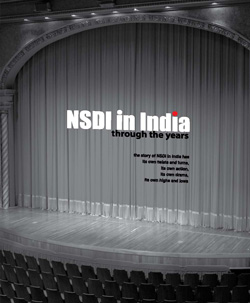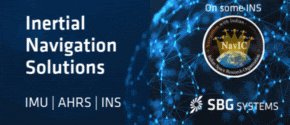
The future of the surveying profession is an issue that has been lingering for many years. Recently, the concern has been growing wider and louder among surveyors. Some surveyors contend that the surveying profession, in its current form, is heading towards extinction. Their reasons include a gradual decline in the number of qualified and licensed professionals, impact of emerging technologies, sophisticated and more capable equipment…
The Terrain Mapping camera (TMC) on board Chandrayaan-1 spacecraft was successfully operated on October 29, 2008 through a series of commands issued from the Spacecraft Control Centre of ISRO Telemetry, Tracking and Command Network (ISTRAC) at Bangalore. Analysis of the first imagery received by the Indian Deep Space Network (IDSN) at Byalalu and later processed…

At SatNav, we have had the privilege of seeing the Indian GPS Navigation Industry from the year 2002, the time we launched our first voice based system, when comments like ‘who needs it?’, ‘my driver knows all the places’, ‘I prefer asking a panwallah to such devices’were the norm. Today the world has changed where the comments are, ‘why doesn’t it tell me the right way to my home?’ and ‘it’s a useful product’, ‘we appreciate…

Earth-observation techniques attract currently a substantial amount of interest and open fresh research and business opportunities for the geospatial community. They offer nowadays a broad spectrum of diverse platforms, sensors and products. UAV systems are paving their way into novel applications. The development of large format digital aerial camera systems has triggered a renewed interest in aerial photogrammetry…
The moon mission of India.
A display of technological prowess.
And willingness.
On November 4, Chandrayaan-1 …
The issue of FDI in GPS systems came up recently in a series of meetings held by the foreign investment promotion board (FIPB). Of late, many Indian companies have evinced interest to manufacture GPS devices in joint venture with foreign counterparts. http://economictimes.indiatimes.com

GESS (GRAIL Environment and Sensor Simulator) is a real-time software prototyped for analysing the GNSS introduction in rail sector. It has been developed by DEIMOS Space in the frame of the GRAIL (GNSS Introduction in the RAIL Sector) contract, lead by Ineco/Tifsa, for the GNSS Supervisory Authority (GSA)…

ESA shortens list of bidders for Galileo
The ESA has listed 11 industrial groups invited to compete for contracts to get Europe’s satellite-navigation system, Galileo, into orbit. They are Italian, Dutch, French, British and German. Galileo now aims to launch its 30 satellites by the end of 2013, giving Galileo users more precision that the current American GPS coverage offers. Europe has already spent 1.6bn euros on Galileo. http://www.euronews.net

GeoEye-1 in orbit: 0.5m resolution imagery starting this fall
GeoEye has announced the launch and deployment of GeoEye-1, the world’s highest resolution, commercial Earthimaging satellite. GeoEye-1 will now undergo a calibration and check-out period before imagery products will be available for sale. GeoEye-1 will simultaneously collect 0.41-meter ground resolution blackand- white (panchromatic) images and 1.65-meter colour (multispectral) images. Designed to take digital images of the Earth from 423 miles (681 kilometers) and moving at a speed of about four-and-a-half miles (seven kilometers) per second, the satellite camera can distinguish objects on the Earth’s surface as small as 0.41-meter or 16 inches in size. Due to U.S. licensing restrictions, commercial customers will get access to imagery at half meter ground resolution. www.gpsbusinessnews.com











 (5.00 out of 5)
(5.00 out of 5)